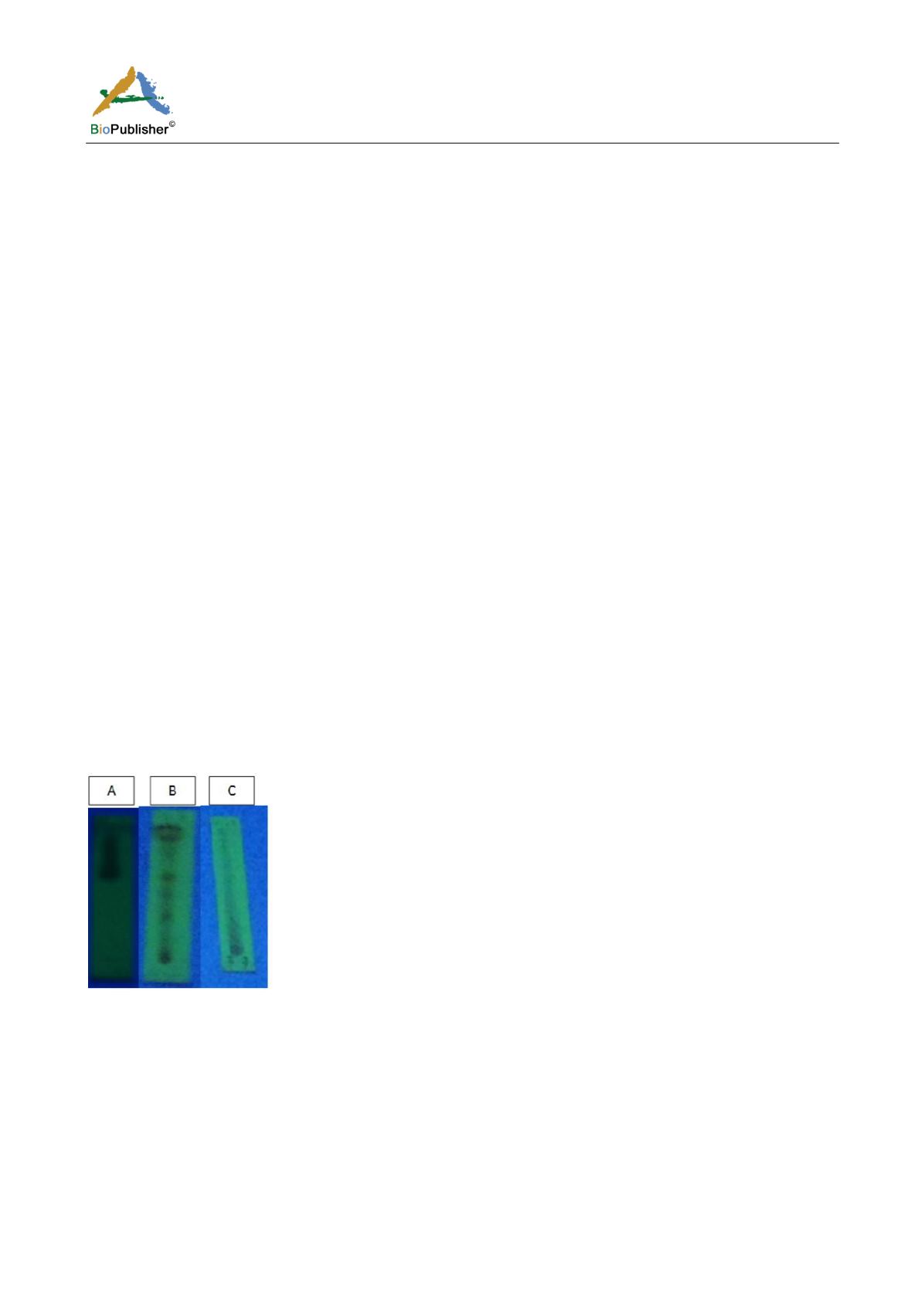
International Journal of Marine Science, 2017, Vol.7, No.31, 297-307
299
1.4 Antibacterial activity test
1.4.1 Making tntibacterial test media
Nutrient agar
as much as 23 g put in erlenmeyer, then dissolved in 1000 ml of distilled water. Then heated on a
hot plate and homogenized using a magnetic stirrer until boiling. In the same way, put as much as 13 g of
nutrient
Broth
into erlenmeyer, then dissolved in 1000 ml of distilled water, heated on a hot plate and homogenized using
magnetic stirrer until boiling. All of the media sterilized by autoclaving at 121 C, a pressure of 15 lbs for 15
minutes.
1.4.2 Rejuvenation of test bacteria test
Ose needle sterilized over a Bunsen flame and left for some time to cooling down. Take 1 ose of pure cultures of
bacteria test, then inoculated into NA medium slanted aseptically. After that incubated for 24 hours at a
temperature of 37°C.
1.4.3 Preparation of test bacteria suspension
The making of suspension of cultures of bacteria is carried by taking 1-2 ose bacteria, which has been rejuvenated
aseptically and then inserted into 9 ml of NB medium and shaker until homogeneous.
1.4.4 The test of antibacterial activity against
E.
coli
,
S.
dysenteriae
, and
B. subtilis
Antibacterial activity test performed by the jelly diffusion method using paper disc with 6 mm diameter.
Antibacterial activity test performed with three repetitions. Paper discs dipped into the sample with a
concentration of 0% (negative control), 2000 ppm, 1000 ppm, 500 ppm, and 250 ppm. Then put on NA medium
that has been inoculated with the test bacteria. Incubation was performed at 37°C for 2x24 hours. Observations
were made on the formation of a clear zone around the paper disc.
2 Result and Discussion
2.1 Extraction of
H. gracillis
Maceration results of grams of
H. gracillis
powder obtained 3 g n-hexane extract, 2 g ethyl acetate and 5 g
methanol. Furthermore, each extract was analyzed by TLC plate. TLC results showed extract n-hexane and ethyl
acetate potentially contain secondary metabolites with the invisibility of the dominant stain pattern fluroscended
under UV light, the test is then performed on extracts of n-hexane and ethyl acetate (Figure 1).
Figure 1 A, KLT of crude extract n-heksan eluen n-heksan: EtOac (8:2); B, etil asetat eluen n-heksan: etil asetat (6:4); and C, metanol
with eluen EtOac: MeOH (9:1)
2.2 Isolation of secondary metabolites compounds of n-hexane
H.gracillis
Crude extract of n-hexane
H.grac
illis fraction as much as 3 grams of the separation and purification using gravity
column chromatography. The vial results were analyzed using TLC plate and obtained 4 column fractions. F1 0.36;
F2 0.11; F3 1.73; and F4 0.51 g. Fraction F3 shows a white crystal and the results of TLC analysis indicates that
the compound is still a little impurity. F3 fraction was purified again using a gravitational field, the results
obtained 3 column fractions F1.1, F1.2, and F1.3. Fractions were analyzed by TLC F1.2. The compound was pure
as just a single stain as much as 1.25 g (Figure 2).


